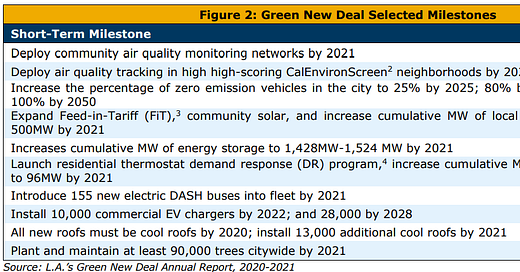President Biden’s pledge to reduce the United States’ greenhouse gas emissions by at least 50% by 2030 is just eight years away. It can’t be done without the cooperation of and incentives for states and local governments. This week’s newsletter looks at what the economic cost is of doing nothing—and how some places are trying to measure their progress.
First, a(nother) quick plug. If you haven’t seen enough of my mug yet, join me this Thursday at Noon ET for the Urban-Brookings Tax Policy Center’s weekly webcast! I’ll be chatting with the TPC’s Howard Gleckman about the hiring and staffing challenges facing state and local governments.
What climate change means for state and local economies
Climate change is increasingly being recognized as a financial risk for governments. Credit ratings agencies have issued several reports in recent years pointing to the economic implications of the increasing rate and magnitude of weather-related disasters. In fact, in 2019 the parent company of Moody’s Investors Service purchased a major stake in a company that analyzes climate risks to companies and governments.
In 2020, a report by the federal Climate-Related Market Risk Subcommittee warned that climate change and extreme weather events add uncertainty and risk to investments. “Over time, if significant action is not taken to check rising global average temperatures, climate change impacts could impair the productive capacity of the economy and undermine its ability to generate employment, income, and opportunity.”
So what’s the cost of doing nothing? A BlackRock Investment Institute report found that if significant climate action is not taken, by the close of this decade at least 15% of the current S&P National Municipal Bond Index market value will be comprised of cities suffering yearly economic losses between 0.5% and 10% of their GDP.
Bottom line: There’s no way to avoid rising costs related to climate change. “Even under optimistic emissions reduction scenarios,” the subcommittee report said, “the United States, along with countries around the world, will have to continue to cope with some measure of climate change-related impacts.”
The good news is, there’s more federal aid available for this effort than ever before. The $1.2 trillion Infrastructure Investment and Jobs Act quite clearly is directed toward reducing greenhouse gasses. For example, several programs fund carbon reduction efforts such as micromobility projects and traffic management systems. What’s more (and as I’ve previously noted), governments can use their $350 billion in American Rescue Plan fiscal relief funding to pay for climate-friendly infrastructure and programs.
The Build Back Better Act, which passed the House of Representatives in November, could also potentially add another $1.75 trillion to the pot.
Related: National Association of Counties legislative analysis of the BBB Act.
Is your community equipped to withstand a disaster?
Keep reading with a 7-day free trial
Subscribe to Long Story Short to keep reading this post and get 7 days of free access to the full post archives.



